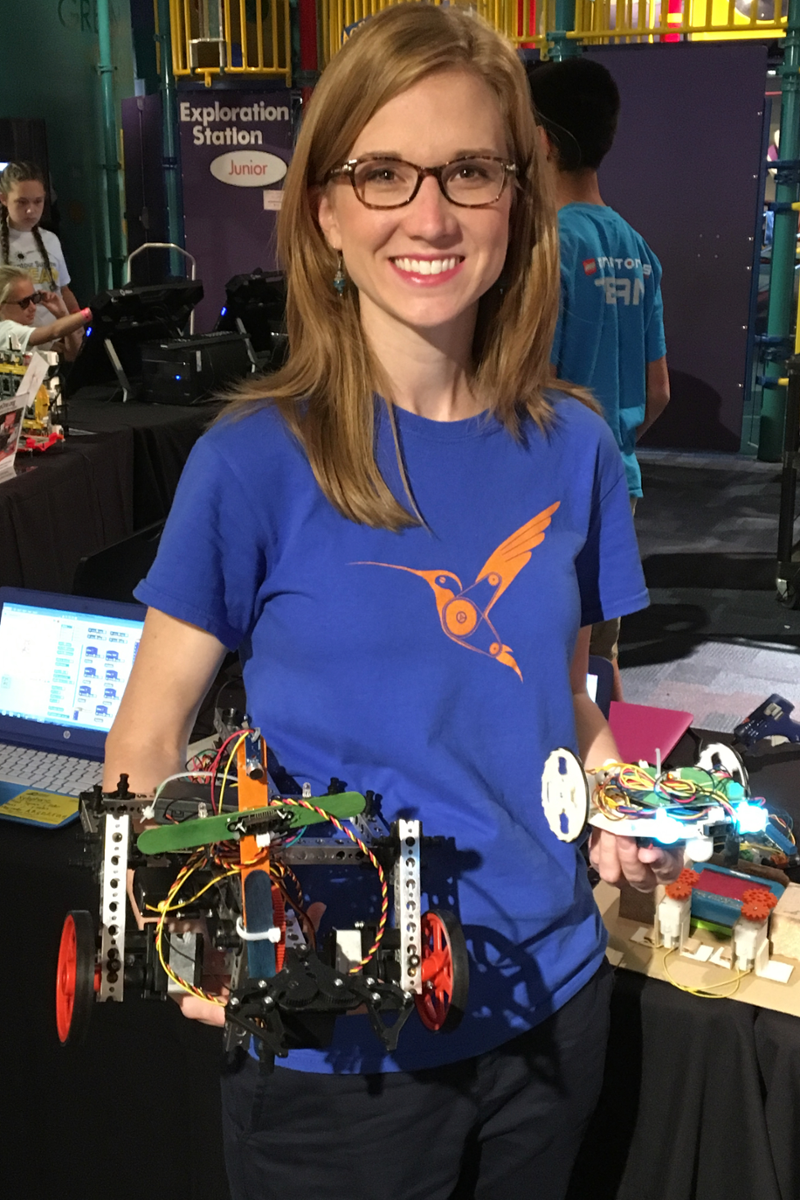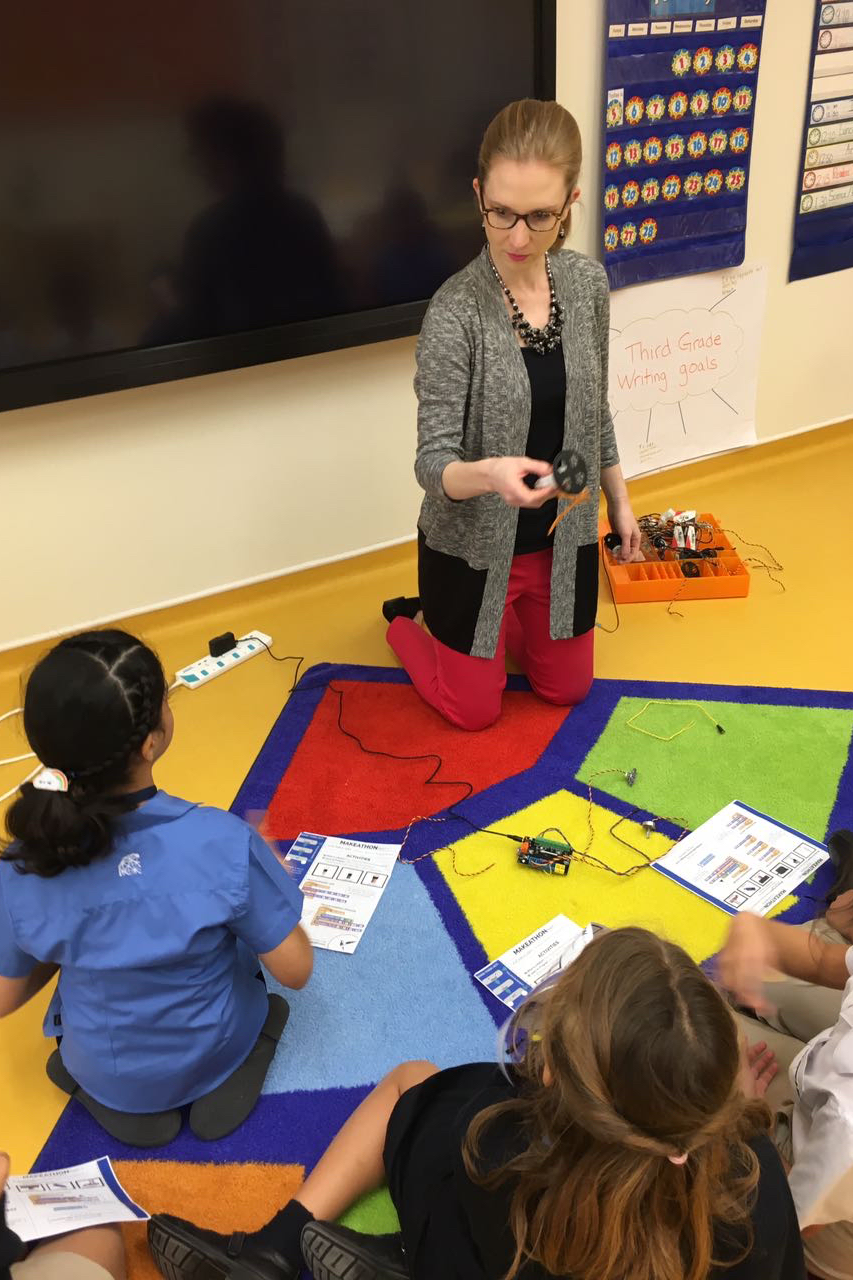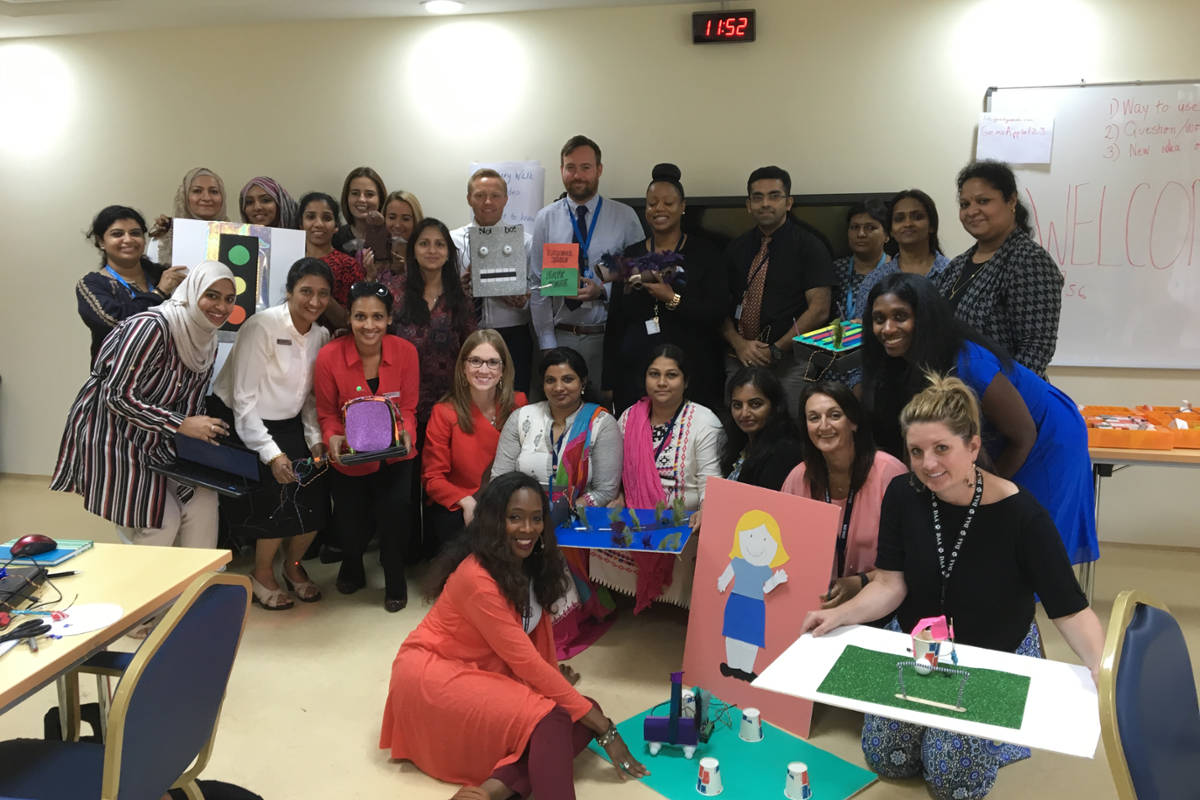Former School Teacher Brings Cross-Curricular Robotics to Students Everywhere


James M. Loy, Miami University
When Katie Henry began her career teaching second grade in a local Ohio school district, she never dreamed it would lead her to where she is today. “I never thought I would be working for a robotics company,” she says. “Ever.”
But soon a company called BirdBrain Technologies would open that door.
 “You couldn't have found a happier teacher on this entire planet than me,” says Henry. “I gave everything I had to my classroom. And then life surprised me. I became hungry in a way I had never experienced, and I wanted to see if I could have a bigger impact in the world and reach more students and more teachers.”
“You couldn't have found a happier teacher on this entire planet than me,” says Henry. “I gave everything I had to my classroom. And then life surprised me. I became hungry in a way I had never experienced, and I wanted to see if I could have a bigger impact in the world and reach more students and more teachers.”
After graduating from Miami University, licensed as a K-5 teacher, a K-12 tech coach, and a K-9 principal, Henry served as an educator and tech integrator for six years.
In that time, she was named one of Miami’s 18 of the Last 9 honorees for leading teams that secured over $10,000 in grant funding to develop numerous science, technology, engineering, and math (STEM) related school projects.
She also received several STEM awards, including the Outstanding Technology-Using Teacher of the Year and the Dayton Regional STEM Center’s STEM Education School-based Collaboration Awards -- and all while simultaneously developing a popular after-school STEM program.
But then, Henry found a unique opportunity to merge both her love of teaching and her experience with holistic STEM programs. In 2016, she became the professional development manager for BirdBrain Technologies, which strives to introduce robotics and computer science to all students, especially those who are still underrepresented in most STEM fields today.
Breaking down barriers
“BirdBrain Technologies is about breaking stereotypes around who has access to robotics and who can do robotics,” Henry says. “That means children of all ages, of all backgrounds. That means girls, resource-poor students, rural students, and students of color. All students can have an opportunity to not only program a robot, but to build a robot. That's very important, to demystify what goes into advanced engineering.”
 Funded in part by the National Science Foundation, BirdBrain Technologies helps nurture the type of learning that’s limited only by the imaginations of those involved. Art, math, science, even literature. Nothing is left out as students and teachers work together using highly versatile robotics kits to build interdisciplinary projects that solve creative and technical problems.
Funded in part by the National Science Foundation, BirdBrain Technologies helps nurture the type of learning that’s limited only by the imaginations of those involved. Art, math, science, even literature. Nothing is left out as students and teachers work together using highly versatile robotics kits to build interdisciplinary projects that solve creative and technical problems.
“It is a game changer in the world of cross-curricular robotics,” Henry says. “I am very excited to bring this product to the world.” And as the professional development manager, she literally does just that.
Her job involves traveling the world to lead workshops for the teachers and schools that hope to learn more about the transformative maker-based learning experiences that BirdBrain provides. And, so far, over 5,000 classrooms across 40 countries have already been introduced to robotics through an array of hands-on lessons that cover anatomy, poetry, energy conservation, history, and much more.
But even as BirdBrain strives to promote equality, diversity, and accessibility, much of its philosophy centers on digital literacy as well.
We are in a society increasingly influenced by digital tools. And technology, in one form or another, is a fixture in most modern classrooms. However, that does not mean this technology is always designed, or used, in a way that benefits students.
So educators need to be intentional about the technologies they choose, and Henry is concerned with helping teachers understand the kinds of tools that will create the best learning experience possible.
Criteria to consider
“There are so many children being isolated with iPads. Isolated with Chromebooks. Isolated with some app or software program in the name of student-centered learning,” she says. “The truth is, when a teacher isolates a child with a screen, the child is actually not alone. The teacher has given over the control of the learning, oftentimes to the engineer who designed that learning experience.”
Some software, she cautions, is primarily designed to collect student data. Other products may be purely developed for profit, and with little regard for the educational value it may or may not deliver.
So what should teachers do?
“My two most important criteria are,” Henry says, “first, you want it to be research-based.”
 Teachers should ask: Why was this product created in the first place? Does it align with their instructional goals? Is there research to support these outcomes? The key, Henry explains, is to distinguish between researched-backed claims and sensational marketing.
Teachers should ask: Why was this product created in the first place? Does it align with their instructional goals? Is there research to support these outcomes? The key, Henry explains, is to distinguish between researched-backed claims and sensational marketing.
“Second, you want to evaluate its adaptability,” she continues. “I am talking about the low floor/high ceiling. Is it easy to get started, but hard to master? Products which have these criteria will naturally differentiate in your classroom, and you will find multiple entry points for all types of learners.”
Finally, if the classroom budget is limited, it is also critical, she explains, to look for hardware that meaningfully integrates with products from other companies. That is, hardware that does not rely on propriety software, or in-app purchases, or additional product add-ons produced by the original manufacturer.
“If you use tools in your classroom that are designed to work with other tools not manufactured by that original company, you’ve made a wise choice. You’re helping children to construct their own learning. And you're serving your purpose as an educator, which is to provide the very best for your students that you can.”
Katie Henry can be reached online and @katiehenrydays

